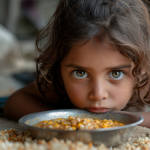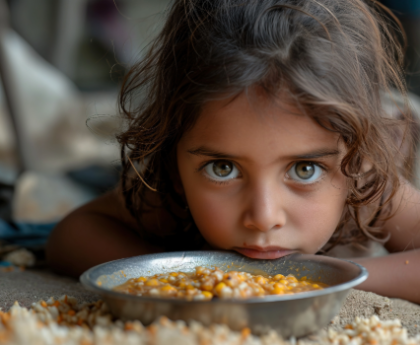A youth advocacy body is preparing to take legal action against the Queensland government for failing to protect young people in the state’s watch houses.
Youth Advocacy Centre CEO Katherine Hayes revealed on Monday police are investigating at least one sexual assault committed against a child while they were being held in an adult watch house.
Ms Hayes has also revealed children as young as 11 are being kept in watch houses with two 14-year-old boys held for 28 and 30 days.
Last week, 56 First Nations children were being held in remand centres, representing 70 per cent of the total figure.
In a statement on Monday afternoon, police said a 16-year-old boy had been charged after he allegedly sexually assaulted a 14-year-old boy at the Cairns watch house in January.
Detectives from the Cairns Child Protection and Investigation Unit charged the 16 year-old with two counts of indecent treatment of a child under 16. He has been remanded in custody until he appears in Cairns Childrens Court in May, police said.
A police spokesperson said the 14-year-old boy was “provided ongoing support in relation to the matter”.
She said the centre, which is also a legal service, was gathering evidence to make a negligence case in the Supreme Court and will commence legal action within weeks.
Ms Hayes said the case would be based on specific cases of children who have suffered maltreatment.
“Arguing that the government has breached its duty of care to these children in its custody as young as 11-years-old, one who was beaten up by other inmates,” she said.
“In some watch houses it’s not physically possible to separate the adult inmates from the kids.
“Young girls are being held in the sight of adult inmates and they can call out to them.”
Ms Hayes said backlogs in the justice system were contributing to overcrowding.
“The detention centres are overflowing because the arrest numbers have increased. That overflows into the adult watch houses, which are designed to only hold adults overnight or two nights at most,” she said.
“It’s taking a very long time for the kids to go through the system, it needs much more funding so that kids in detention centres are serving sentences rather than waiting to be sentenced. That will open up room in the detention centres.”
The Youth Advocacy Centre has written a scathing letter to the state, after a “summer of human rights abuses,” as described by the state’s Human Rights Commissioner.
Loading…
The state parliament overrode the human rights act in August last year to allow the indefinite detention of young people in adult watch houses.
It’s a situation that was “entirely predictable”, according to Commissioner Scott McDougall.
“It was very clear to me … that by summer, we would have watch houses full of children for weeks on end,” he told the ABC. “It has eventuated.”
Gold Coast chief superintendent Craig Hanlon conceded police watch houses were not the most appropriate place for juvenile offenders to be held, but options were limited in the youth justice system.
“When they are in our watch houses they are separated from adult prisoners and they’re provided support through the Department of Youth Justice and other not-for-profit organisations,” he said.
“We continually liaise with the Department of Youth Justice in an effort to have those detainees removed from our watch houses into youth detention centres and limit and reduce the number of days they’re held in our watch houses.”
But chief superintendent Hanlon said the number of children being detained in watch houses had increased since the Queensland government’s legislation changed.
“But there are reasons why they’re in the watch house and that’s because of their criminality or their conduct,” he said.
In a statement, Minister for Youth Justice Di Farmer said there were “stringent accountability processes” including “constant CCTV footage and oversight by a number of independent agencies” in place.
“There are a range of supports available — from regional Youth Justice staff and funded supports including legal advocacy, bail supports and cultural services,” she said.
Loading…
The state’s response to youth offending has been thrust into the spotlight, with an ABC investigation revealing the repeated institutional failures that helped create one of the state’s youngest killers.
It’s amid rising crime figures, a worrying politicisation of youth crime, and fears that the voices of victims have been sidelined in the debate.
“Politicisation is the greatest impediment to youth justice policy,” Commissioner Natalie Lewis from Queensland’s Family and Child Commission (QFCC) says.
“When we focus on sensationalising youth crime, a lot of the discourse becomes dominated by tough on crime rhetoric.
“It actually causes us to drift further away from an evidence-based response.”
The search for ‘real solutions’
Youth justice remains a highly vexed issue in Queensland, with both sides of the political spectrum keenly aware it will be a deciding factor in the looming state election.
Earlier this month, a bipartisan committee formed to tackle youth crime was dissolved over political differences.
Trudy Reading from Voice for Victims says the committee had shown a “reluctance” to listen to victims of youth crime.
Loading…
“It’s very disappointing for victims, we were hoping there would be a transparent inquiry that would provide real solutions,” she says.
“Victims are continuing to be let down.”
According to Commissioner Lewis, the committee presented “an opportunity to overcome a real barrier to effective youth justice reform”.
“And that was to overcome the politicisation of youth justice, I think that’s been incredibly unhelpful,” she offers.
Ms Reading believes the “juvenile justice system is broken”, and is advocating for more to be done “to rehabilitate kids and get them off the streets”.
When it comes to the drivers of youth crime, the evidence has been clear “for a really long time”, adds Commissioner Lewis, who points to disengagement from school, family violence and insecure housing.
“When we talk about prevention and early intervention, a lot of the focus of investment has been about preventing entry to detention or incarceration,” she says.
“But when we’re talking about preventing the root causes and the drivers, we have to address those broader issues that sit outside the youth justice portfolio.”
Looking outside the justice system
It’s a sentiment social worker Amy Mayes understands all too well.
In March 2020, 15-year-old Angus Beaumont was killed during an altercation with two teenagers, just a stone’s throw from the youth centre she operates in Redcliffe, north of Brisbane.
The boys, who are now over 18 but still cannot be named under the state’s youth justice laws, were convicted in relation to his murder earlier this year.
An ABC investigation has revealed Ms Mayes repeatedly sounded the alarm about the living conditions of one of those teenagers, known as Cody*, in the years leading up to the killing.
She was among many who repeatedly tried to intervene in the boy’s situation, but her “dozens, if not hundreds” of pleas to child safety services over a three-year period often went unanswered.
Ms Mayes says broader drivers like housing, education and prevention have been overlooked in the debate.
“We need to start broadening our gaze to outside the justice system,” she says.
“We need a bipartisan approach. We don’t have a bipartisan approach. We know that that’s what works.”
Angus’s mother, Michelle Liddle, told the ABC she was “angry and heartbroken” to learn the Queensland government had been warned about the lethal trajectory of one of his killers.
“It just confirms what we all know — the system failed in every way,” she said.
“It failed through youth [justice], children’s services, through the court system [and] through the legislation that police have to work with.”
A perfect storm
Queensland’s youth justice system has been at a dangerous tipping point for years, with political leaders cracking down on youth offending through “tough on crime” approaches.
In March last year, the Labor government introduced laws making breach of bail an offence for children, in response to calls for action.
Controversial laws were rushed through months later, allowing police watch houses and adult prisons to be used as youth detention centres.
Those laws, combined with an already stretched justice system, set the stage for a perfect storm, Queensland’s Human Rights Commissioner says.
“Over summer, we’ve had children spending weeks and weeks, so 25 days, 29 days [in watch houses],” Commissioner McDougall says.
“We’re talking about concrete and steel environments, fluorescent lights, plastic mats that children are expected to sleep on.”
Despite reforms introduced five years ago in the wake of explosive allegations of maltreatment of children in Queensland watch houses, Commissioner McDougall says the situation hasn’t improved.
Addressing the root cause
Ms Mayes fears these sorts of conditions will only lead to the further institutionalisation of young offenders, who “connect with like-minded young people who make them feel like they’re somebody”.
“What we need to do is listen to the research… on how to stop these things from happening, but we don’t put them in place,” she says.
Loading…
“[People] don’t always have the understanding of trauma, abuse and neglect and how that impacts the brain. If we could address that, we wouldn’t have the population that we have in our prison systems at the moment.”
Commissioner Lewis believes those at the centre of the debate have ultimately been forgotten.
“Public discourse around youth crime becomes a bit harder when we have to actually acknowledge children as victims in their own right,” she says.
“Young people do experience vulnerability, it’s not an excuse, but it provides us context.
“If we want them to stop offending, we have to address those reasons, we can’t conveniently overlook them.”
Posted 12h ago12 hours agoSun 28 Apr 2024 at 7:47pm, updated 34m ago34 minutes agoMon 29 Apr 2024 at 8:06am
This post was originally published on 3rd party site mentioned in the title of this page




